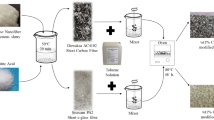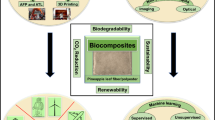Abstract
Fiber composite materials exhibit exceptional specific stiffness and strength compared to traditional engineering materials. Nevertheless, automating the handling of limp flexible materials like fabrics remains a challenging process, often relying on multi-stage manual operations for hand layups. In this study, carbon fabric properties were initially characterized through standard experiments to develop and calibrate a finite element (FE) model. The FE model was subsequently validated against real-world pick-and-place tests involving soft robotic grippers. The validation results demonstrated a high correlation between the FE model and experiments, achieving an average accuracy of 97.2% for fabric projected area and 84.6% for fabric vertices’ displacement. Additionally, the FE model was used to design, evaluate, and optimize alternative automation strategies. It was discovered that a convex surface improved fabric projection area and placement accuracy by 5.9% and 1.9%, respectively, compared to a concave surface with the same curvature radius. Larger concave surfaces contributed to increased projected area and placement accuracy as well. Longitudinal pick-and-place operations also enhanced the projection area and placement accuracy compared to transverse handling processes. Achieving successful fabric pick-and-place operations necessitates a comprehensive system’s approach, considering the interaction between grippers, fabric, and mold surface. The FE model developed in this study will be further employed by the current research team in designing innovative compliant grippers tailored to complex mold surface geometries and specific fabric material requirements. The presented FE model offers valuable insights and paves the way for rapid, efficient, cost-effective, and secure implementation of automation solutions for handling limp flexible materials.




























Similar content being viewed by others
References
Bernard BP, Putz-Anderson V (1997) Musculoskeletal disorders and workplace factors: a critical review of epidemiologic evidence for work-related musculoskeletal disorders of the neck, upper extremity, and lower back. Department of Health and Human Services, Centers for Disease Control and Prevention, National Institute of Occupational Safety and Health. Series: DHHS publication, no. (NIOSH) 97–141. https://stacks.cdc.gov/view/cdc/21745
Komeili M (2014) Multi-scale characterization and modeling of shear-tension interaction in woven fabrics for composite forming and structural applications. PhD Dissertation, University of British Columbia. https://doi.org/10.14288/1.0074335
Giorgio I, Harrison P, dell’Isola F, Alsayednoor J, and Turco E (2018) Wrinkling in engineering fabrics: a comparison between two different comprehensive modeling approaches. Proc R Soc A: Math Phys EngSci https://doi.org/10.1098/rspa.2018.0063
Alebooyeh M, Wang B, Urbanic RJ (2020) Performance study of an innovative collaborative robot gripper design on different fabric pick and place scenarios SAE Tech Pap https://doi.org/10.4271/2020-01-1304
Wang B (2020) Design and development of a soft robotic gripper for fabric material handling. MASc Thesis, University of Windsor. https://scholar.uwindsor.ca/etd/8406
Strelkova D, Urbanic RJ (2022) Design and fabrication of novel compliant mechanisms and origami structures for specialty grippers. Towards sustainable customization: bridging smart products and manufacturing systems. CARV MCPC 2021. Lecture Notes in Mechanical Engineering. Springer, Cham.https://doi.org/10.1007/978-3-030-90700-6_5
Uppalapati NK, Krishnan G (2021) Design and modeling of soft continuum manipulators using parallel asymmetric combination of fiber-reinforced elastomers. J Mech Robot 13(1). https://doi.org/10.1115/1.4048223
Alebooyeh M, Wang B, Urbanic RJ, Djuric A (2019) Investigating collaborative robot gripper configurations for simple fabric pick and place tasks. SAE Tech Pap https://doi.org/10.4271/2019-01-0699
Kim G, Sterkenburg R (2017) Manufacturing or repairing composite parts and components using laser scanning technology. https://doi.org/10.12783/asc2017/15169
Kovačević DU (2013) Seams in car seat coverings: properties and performance. Woodhead Publishing Series in Textiles, Cambridge
Schumacher KA, Forster AL (2022) Textiles in a circular economy: an assessment of the current landscape, challenges, and opportunities in the United States Front Sustain https://doi.org/10.3389/frsus.2022.1038323
Lukaszewicz A, Dirk HJ, Ward C, Potter KD (2012) The engineering aspects of automated prepreg layup: history, present and future. Compos B Eng 43:997–1009
Kang TJ, Yu WR (1995) Drape simulation of woven fabric by using the finite-element method. J Text Inst 86:635–648
Dörr D (2021) Simulation of the thermoforming process of UD fiber-reinforced thermoplastic tape laminates. KIT Scientific Publishing, Karlsruhe
Schirmaier FJ, Dörr D, Henning F, Kärger L (2017) A macroscopic approach to simulate the forming behavior of stitched unidirectional non-crimp fabrics (UD-NCF). Compos A Appl Sci Manuf 102:322–335
Morea MI (2011) Improvements to constitutive material model for fabrics. MASc Thesis, Order No. 1492456, ProQuest Publications, Arizona State University
Müzel DS, Bonhin EP, Guimarães NM, Guidi ES (2020) Application of the finite element method in the analysis of composite materials A review. Polymers 12(4):818
Dell’Isola F, Steigmann D (2015) A two-dimensional gradient-elasticity theory for woven fabrics. J Elast 118:113–125
Cao J, Akkerman R, Boisse P, Chen J (2008) Characterization of mechanical behavior of woven fabrics: experimental methods and benchmark results. Compos A Appl Sci Manuf 39:1037–1053
Iwata A, Inoue T, Naouar N, Boisse P, Lomov SV (2019) Coupled meso-macro simulation of woven fabric local deformation during draping. Compos A Appl Sci Manuf 118:267–280
Misra RK, Dixit A, Mali HS (2014) Finite Element (FE) Shear modeling of woven fabric textile composite 6th International Conference on Materials Processing and Characterisation. Procedia Mater Sci 6:1344–1350
Nadler B, Papadopoulos P, Steigmann DJ (2006) Multiscale constitutive modeling and numerical simulation of fabric material. Int J Solids Struct 43:206–221
Yu F, Chen S, Harper LT, Warrior NA (2021) Simulating the effect of fabric bending stiffness on the wrinkling behavior of biaxial fabrics during preforming. Compos A ApplSci Manuf https://doi.org/10.1016/j.compositesa.2021.106308
Boisse P, Hamila N, Vidal-Sallé E, Dumont F (2011) Simulation of wrinkling during textile composite reinforcement forming. Influence of tensile, in-plane shear and bending stiffnesses. Compos Sci Technol 71:683–692
SIMULIA (2022) SIMULIA user assistance. Dassault Systèmes Simulia Corp. https://www.3ds.com/support/documentation/user-guides
ASTM (2018) ASTM D1388–18, Standard test method for stiffness of fabrics, ASTM International, ICS Code: 59.080.30. https://doi.org/10.1520/D1388-18
ASTM (2021) ASTM D5034–09, Standard test method for breaking strength and elongation of textile fabrics (grab test), ASTM International, ICS Code: 59.080.30. https://doi.org/10.1520/D5034-09
Alebooyeh M, Urbanic RJ (2022) Mold geometry analysis tools for fabric material handling system applications. Proceedings of CAD’22. Beijing, China, July 11-13, pp.404–409. CAD Solutions, LLC. https://www.cad-conference.net/files/CAD22/CAD22_404-409.pdf
Alebooyeh M, Urbanic J, Strelkova D, Boyapati GK (2024) A component based approach to automated flexible material handling: interactive compliant gripper design relative to mold surfaces. J CAD Appl. In press: 21(6)
Strelkova D, Urbanic RJ (2022) Design and fabrication of novel compliant mechanisms and origami structures for specialty grippers. In: Towards sustainable customization: bridging smart products and manufacturing systems: Proceedings of the 8th Changeable, Agile, Reconfigurable and Virtual Production Conference (CARV2021) and the 10th World Mass Customization & Personalization Conference (MCPC2021), p 55–62
Funding
This research was funded by the NSERC CREATE grant, number: 511011–2018.
Author information
Authors and Affiliations
Contributions
The study conception was led by Prof. Jill Urbanic and Morteza Alebooyeh. The design, modeling, simulation, material preparation, data collection, and analysis were conducted by Morteza Alebooyeh. Prof. Jill Urbanic structured and provided financial support for the research project. The first draft of the manuscript was written by Morteza Alebooyeh followed by the editorial support from Prof. Jill Urbanic. All authors have read and approved the final manuscript.
Corresponding author
Ethics declarations
Competing interests
The authors declare no competing interests.
Additional information
Publisher's Note
Springer Nature remains neutral with regard to jurisdictional claims in published maps and institutional affiliations.
Rights and permissions
Springer Nature or its licensor (e.g. a society or other partner) holds exclusive rights to this article under a publishing agreement with the author(s) or other rightsholder(s); author self-archiving of the accepted manuscript version of this article is solely governed by the terms of such publishing agreement and applicable law.
About this article
Cite this article
Alebooyeh, M., Urbanic, J. Development of robotic automation solutions for limp flexible material handling leveraging a finite element modelling technique. Int J Adv Manuf Technol 132, 781–800 (2024). https://doi.org/10.1007/s00170-024-13229-z
Received:
Accepted:
Published:
Issue Date:
DOI: https://doi.org/10.1007/s00170-024-13229-z




